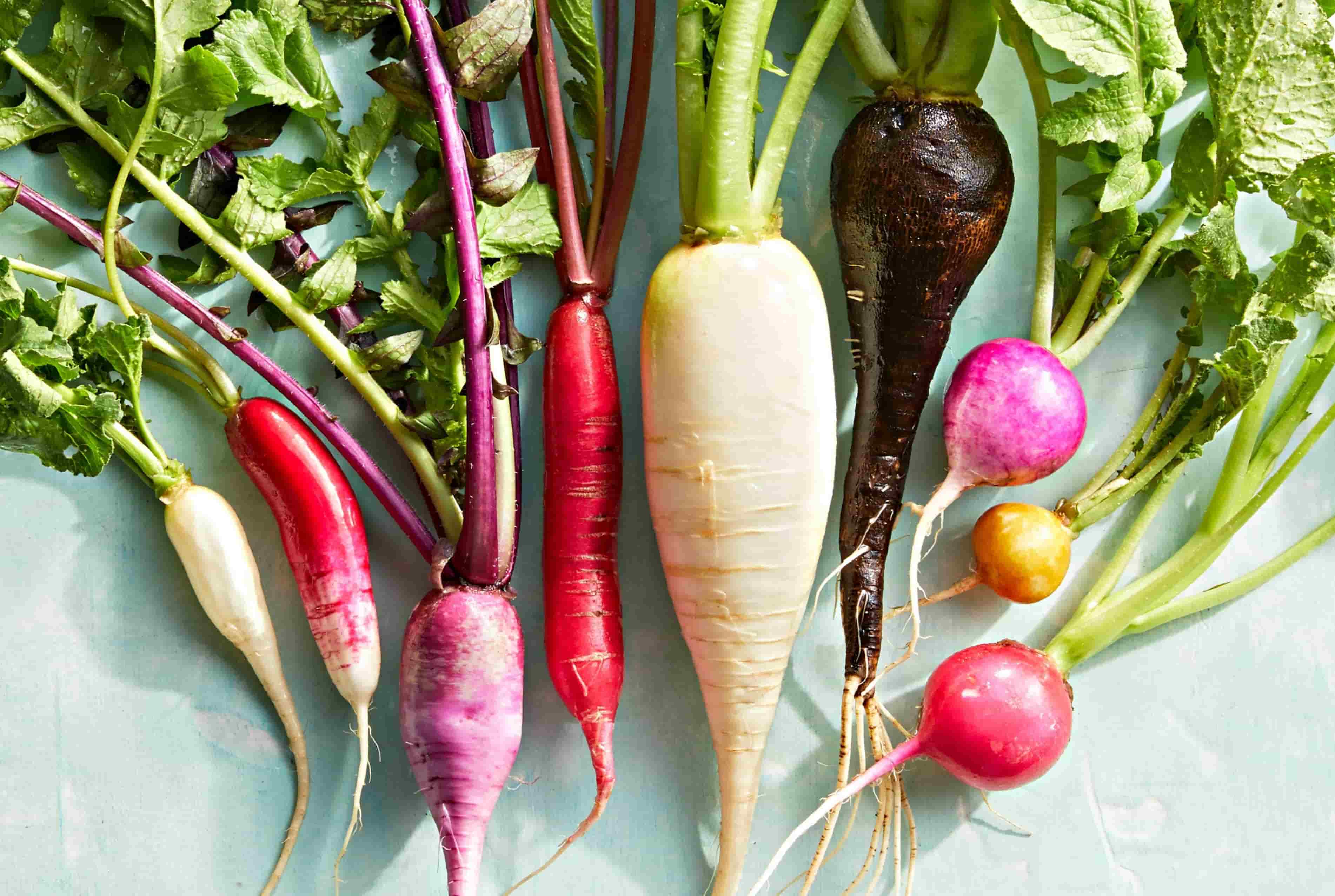
Radishes might seem like a simple root vegetable, but they pack a punch of flavor and nutrition. Ever wondered why these crunchy delights are a staple in salads and dishes worldwide? Radishes are not just about their peppery taste; they offer numerous health benefits, from aiding digestion to boosting the immune system. Whether you're a gardening enthusiast or a culinary explorer, understanding the fascinating world of radishes can add a new dimension to your meals and health. Ready to learn some intriguing facts about this versatile veggie? Let's dive into the world of radishes and uncover what makes them so special!
Key Takeaways:
- Radishes are crunchy, nutritious, and easy to grow. They come in various shapes and sizes, making them a versatile addition to any meal. They can be enjoyed raw, pickled, or even roasted for a sweet flavor.
- Radishes have a rich history and are enjoyed in different ways around the world. They are a staple in Japanese soups and stews, a key ingredient in Korean kimchi, and a popular addition to Mexican street foods.
Radishes: A Crunchy Delight
Radishes are small, crunchy, and packed with flavor. They come in various shapes, sizes, and colors, making them a versatile addition to any meal. Let's dive into some fascinating facts about this humble root vegetable.
-
Radishes belong to the Brassicaceae family, which also includes cabbage, broccoli, and kale.
-
The word "radish" comes from the Latin word "radix," meaning root.
-
Radishes were first cultivated in Southeast Asia thousands of years ago.
-
Ancient Egyptians enjoyed radishes and even paid workers with them during the construction of the pyramids.
-
There are over 35 different varieties of radishes, ranging from mild to spicy.
Nutritional Powerhouse
Radishes are not just tasty; they are also incredibly nutritious. Here are some facts about their health benefits.
-
Radishes are low in calories, making them a great snack for those watching their weight.
-
They are rich in vitamin C, which helps boost the immune system.
-
Radishes contain antioxidants that can help protect the body from free radicals.
-
They are a good source of fiber, aiding in digestion and promoting a healthy gut.
-
Radishes have a high water content, which helps keep you hydrated.
Growing Radishes
Radishes are one of the easiest vegetables to grow, making them perfect for beginner gardeners. Here are some interesting facts about growing radishes.
-
Radishes can be grown in as little as three weeks from seed to harvest.
-
They thrive in cool weather and can be planted in both spring and fall.
-
Radishes grow best in well-drained soil with plenty of organic matter.
-
They can be grown in containers, making them ideal for small spaces or urban gardens.
-
Radish seeds should be planted about half an inch deep and spaced one inch apart.
Culinary Uses
Radishes are incredibly versatile in the kitchen. Here are some ways you can use them in your cooking.
-
Radishes can be eaten raw, adding a crunchy texture to salads and sandwiches.
-
They can be pickled for a tangy, flavorful snack.
-
Radish greens are edible and can be used in salads or sautéed like spinach.
-
Roasting radishes brings out their natural sweetness and mellows their spiciness.
-
Radishes can be used as a garnish to add color and flavor to dishes.
Fun Facts
Radishes have some quirky and fun aspects that make them even more interesting. Check out these fun facts.
-
In Oaxaca, Mexico, there is a festival called "Noche de Rábanos" or "Night of the Radishes," where people carve radishes into elaborate sculptures.
-
Radishes can be used as a natural dye, producing a pinkish-red color.
-
Some radish varieties can grow as large as a basketball, like the Sakurajima radish from Japan.
-
Radishes were one of the first vegetables to be grown in space by astronauts.
-
The spiciness of radishes comes from compounds called glucosinolates, which are also found in mustard and horseradish.
Radishes Around the World
Different cultures have unique ways of enjoying radishes. Here are some global radish facts.
-
In Japan, daikon radishes are a staple and are often used in soups, stews, and pickles.
-
In Korea, radishes are a key ingredient in kimchi, a traditional fermented dish.
-
French breakfast radishes are a popular variety in France, often eaten with butter and salt.
-
In India, radishes are used in a variety of dishes, including salads, curries, and parathas.
-
In Mexico, radishes are commonly served with tacos and other street foods for added crunch and flavor.
Radishes: More Than Just a Crunchy Snack
Radishes aren't just a crunchy addition to salads. These root veggies pack a punch with their nutritional value and health benefits. Loaded with vitamin C, fiber, and antioxidants, they help boost immunity, aid digestion, and even support heart health. Plus, their low-calorie content makes them a great choice for weight management.
Beyond health perks, radishes have a rich history and cultural significance. From ancient Egypt to modern kitchens worldwide, they've been cherished for their unique flavor and versatility. Whether you enjoy them raw, pickled, or cooked, radishes offer a delightful burst of spiciness and crunch.
So next time you're at the grocery store, grab a bunch of radishes. They're not just good for you—they're a tasty way to add some zing to your meals.
Frequently Asked Questions
Was this page helpful?
Our commitment to delivering trustworthy and engaging content is at the heart of what we do. Each fact on our site is contributed by real users like you, bringing a wealth of diverse insights and information. To ensure the highest standards of accuracy and reliability, our dedicated editors meticulously review each submission. This process guarantees that the facts we share are not only fascinating but also credible. Trust in our commitment to quality and authenticity as you explore and learn with us.


